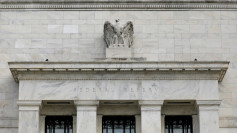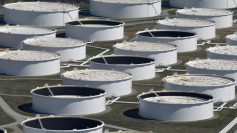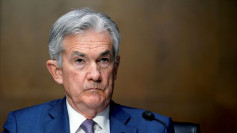The easing of financial restrictions in Australia has nudged interest rates down to regions where they could do more harm to the economy than good.
The central bank could push against the "reversal rate of interest," a level at which easing policy starts to produce unintended results. The clearest indication of this is the drop in consumer sentiment since it began to trim down rates in June, especially after the cuts in July and October.
Against this scenario, analysts project that Governor Philip Lowe will pause on Tuesday and hold the cash rate at 0.74 percent.
"Most people equate interest-rate cuts as an indication that something is going wrong, especially when you're already at record-lows," said Michael Blythe of Australia's Commonwealth Bank.
The conundrum of the RBA is that if big peers like the Federal Reserve loosen regulation, it must keep pace, otherwise the Aussie dollar will leap and hurt exporters.
Lowe got some help last week when Fed head Jerome Powell announced that after slashing three times, he was on the lock, the same as the RBA.
The dollar exchanged about 69 U.S. cents on Monday, about a quarter below its June peak when Lowe ended a three-year break in the price.
His fellow board member, Ian Harper, fired back at opponents of the RBA's revived easing, pointing out that annual economic output was 1.5 percent - around half the 'speed limit' - and the jobless level declined 5.3 percent, well above the full-employment forecast.
While major banks have passed most of the RBA's reductions on to depositors, they have not passed as much on to lenders- further blunting the effect of central bank policy.
To Blythe, who has exposure to reams of financial data as chief economist at the nation's largest bank, there is further proof in the scarcity of mortgage holders using the RBA's reductions to lower their monthly repayments and free up cash. "We choose to bring the additional funds into debt repayments," he added.
Another indication of the "bad trust impact" is that households are being banked and placed into the loan through government tax rebates, Blythe said.
In support of this, retail sales increased by a measurable 0.3 percent last month, only half of the economists' estimates and volumes declined by 0.1 percent in the third quarter. Indeed, retailers now appear to be only keeping the high population growth back on the floor.
One area in which rate cuts work is on the property department, with prices rising again after a two-year slowdown in major cities.
In October, prices in Melbourne increased by 2.4 percent, the highest monthly advance in almost a decade; overall, since May's edge, they have risen by 7 percent. Sydney is not far behind, with 1.8 percent leap last month and 5.3 percent turnaround after May.




